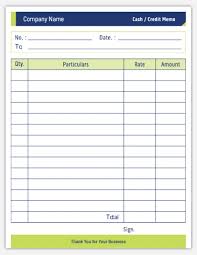Owning a restaurant isn’t really just about serving good food and providing a nice dining atmosphere. There’s another equally important side of the business—billing. Having a clear and professional restaurant bill format doesn’t just help keep your accounts in order, Restaurant Bill Format it also gives your customers peace of mind that they’re being charged fairly.
Think of the bill as your restaurant’s handshake at the end of a meal. If it looks fair, professional and accurate, customers will always walk out happy and more likely to return. On the other hand, If it is confusing or does not appear professional, it may leave quite a bad impression.
This guide will take you through everything you need to know about restaurant bill formats—why they are important, what to include in them, rules for applying GST in India, and even some templates so that you can design them for your restaurant.
Why a Professional Bill Format is So Important
Certainly, food attracts customers, but how you communicate your billing or invoicing can impact if they trust your restaurant for the long haul. Here are some reasons why a proper bill format is important:
✅ Legally Safe – A GST compliant bill protects you against fines and penalties.
✅ Builds Trust – A neat and organized bill itemizes your food and beverage charges to show customers you are being honest.
✅ Organizes Your Tax Records – Track sales, budgets, profits, and accounts.
✅ Enhances Your Branding – A branded bill looks uniform and memorable.
✅ Reduces Errors – A clear format with line items means fewer billing errors and smoother operations.
In summary: A structured bill format saves time, builds credibility, and helps your restaurant run more efficiency.
Different Types of Bills Used in Restaurants
Not every restaurant uses the same type of bill. The format usually depends on the size of your business and the kind of service you offer. Here are the most common ones:
- Simple Bill Format
Perfect for small cafés, dhabas, or food trucks. It’s basic, with just items, prices, and total. - Bill Format with GST
Mandatory for GST-registered restaurants. This one includes GSTIN, HSN/SAC codes, and a clear tax breakup. - POS or Digital Bill Format
Used by restaurants with billing software or POS machines. It’s quick, error-free, and professional. - Excel/Word Bill Format
Great for small restaurants that don’t want to invest in billing software. Easy to customize and update. - Bill Format with Service Charges
For restaurants that charge a service fee. The format clearly lists food cost + GST + service charge.
Key Elements Every Invoice Should Contain
No matter which format you choose, your bill must include these essentials:
- Your Restaurant Details – Name, logo, address, and GSTIN.
- Customer Details – Table number or delivery info.
- Invoice Number & Date – Helps in tracking and record-keeping.
- Itemized List of Orders – Each dish, quantity, rate, and price.
- Subtotal – Before tax.
- Taxes (if applicable) – CGST, SGST, or IGST clearly mentioned.
- Service Charge – Only if your restaurant charges it.
- Grand Total – Final amount payable.
- Payment Method – Cash, UPI, card, or wallet.
- Thank You Note or Terms – A simple “Thank you for dining with us!” goes a long way.
Restaurant Billing Rules in India (with GST)
Since GST came into play, billing rules for restaurants have become a lot more structured. Here are the basics:
Who needs GST?
Restaurants with annual turnover above ₹40 lakhs must register under GST.
GST Rates for Restaurants:
- 5% GST – For most standalone restaurants (without Input Tax Credit).
- 18% GST – For restaurants inside hotels with room tariffs above ₹7,500.
What must your bill show?
- GSTIN number.
- HSN/SAC code.
- Tax breakup (CGST + SGST, or IGST).
👉 If your restaurant doesn’t fall under GST, you can still issue a simple bill without tax details.
Sample GST-Compliant Food Bill
Let’s take a quick glance at what a GST-compliant bill could look like:
Spice Delight Restaurant
Address | Contact Number | GSTIN: XXXXXXX
| Item | Qty | Rate (₹) | Amount (₹) |
|---|---|---|---|
| Paneer Butter Masala | 1 | 200 | 200 |
| Butter Naan | 3 | 40 | 120 |
| Soft Drink | 2 | 50 | 100 |
Subtotal: ₹420
CGST (2.5%): ₹10.50
SGST (2.5%): ₹10.50
Total: ₹441
What you notice here is transparency—there is no guesswork for the customer, and no stress for the restaurant.
Different Types of Restaurant Bill Formats Used in India
- Simple Bill Format – Best for small cafés, food trucks, and dhabas.
- Bill Format with GST – Needed for GST-registered restaurants.
- POS Bill Format – Used with billing software for accuracy.
- Excel/Word Bill Format – Easy to customize for small businesses.
- Bill Format with Service Charge – Includes extra service fee details.
Why a Professional Restaurant Bill Format Matters
- Creates trust between restaurant and customer.
- Shows transparency in food charges and taxes.
- Keeps accounts and tax records organized.
- Enhances your restaurant’s branding.
- Reduces billing errors and confusion.
Final Thoughts on Restaurant Bills
Ultimately, a restaurant bill format is much more than a sheet of paper, it is part of the customer experience. A polished bill indicates you care about quality and transparency, not just with the food, but with service as well.
If you’re starting a new restaurant, a simple Word or Excel bill is adequate. When you are ready to monetize your concept, consider POS billing for speed and accuracy.
Remember: people love good food but they come back because they like the service (which includes a nice bill).

